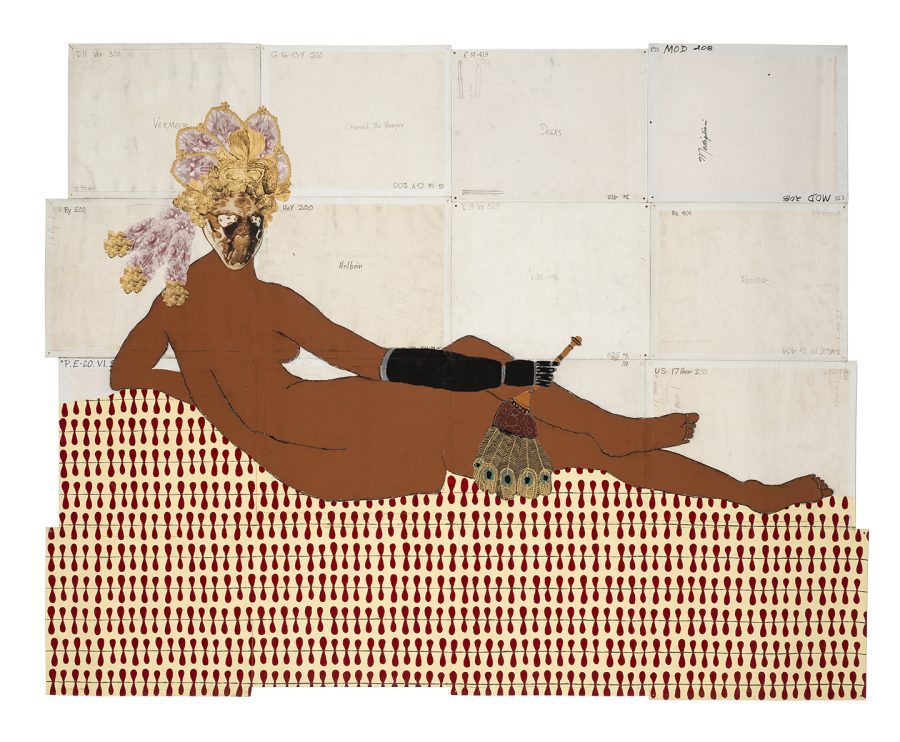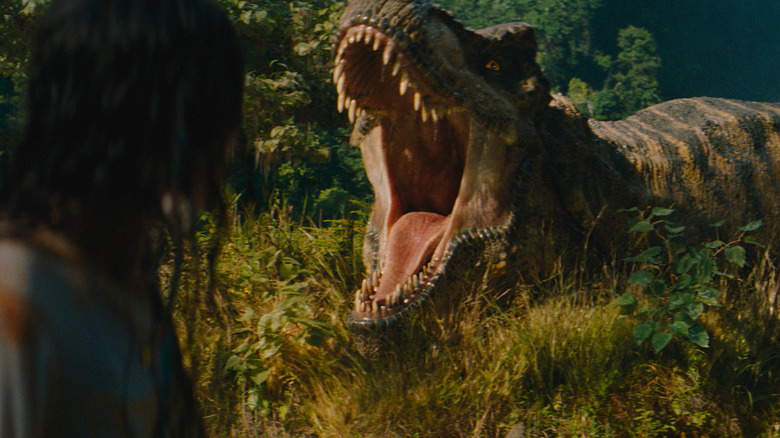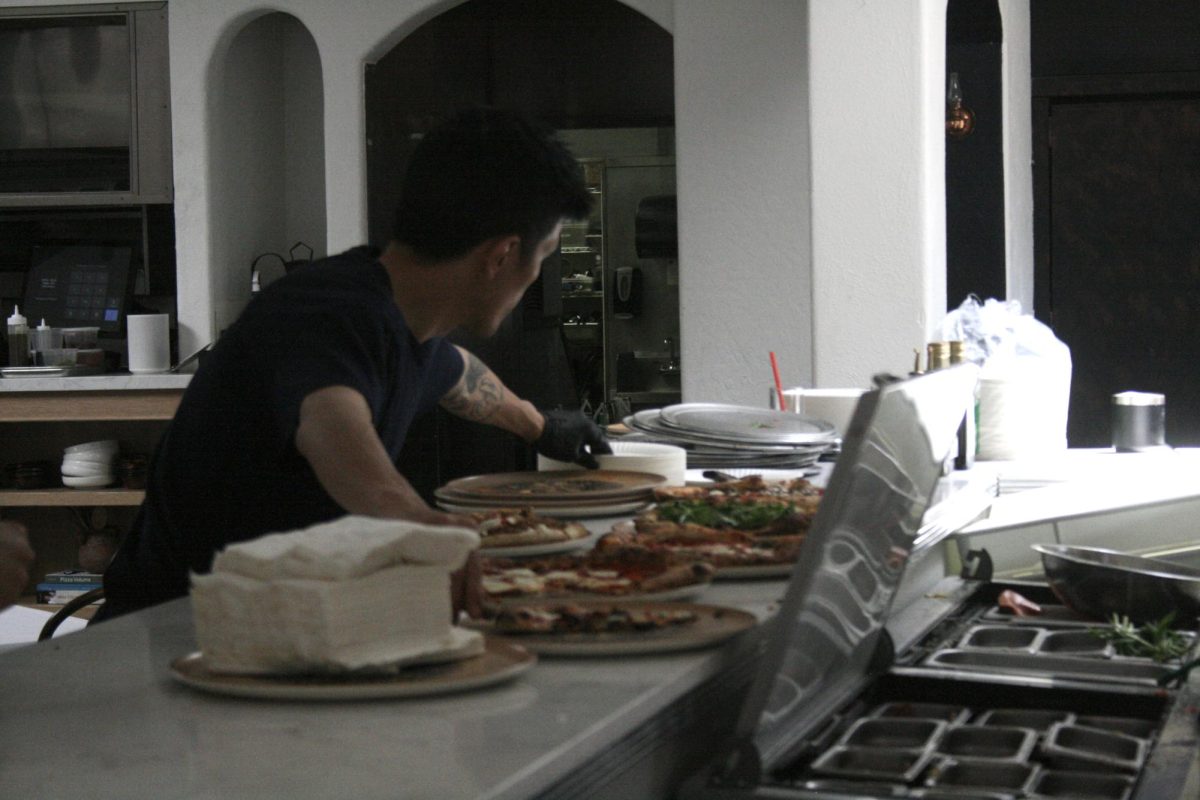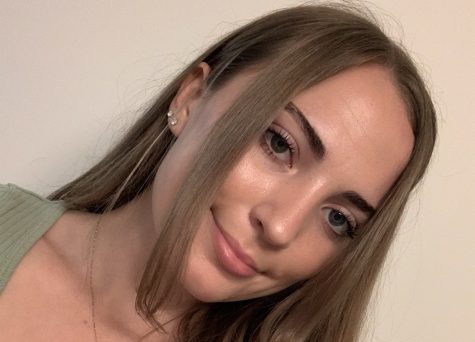San Diego State’s first-ever art exhibition centered on disability, “Script/Rescript,” features 10 artists whose artwork rejects confining medical scripts and redefines personal narratives of disability.
“Script/Rescript,” which is located in the University Art Gallery, is curated by SDSU art history lecturer and disability art activist Amanda Cachia.
Cachia spoke at the disability perspectives in a contemporary art discussion panel hosted by Arts Alive SDSU in early November.
“Script/Rescript is supposed to be literal but also metaphorical,” Cachia said. “You know when you go to the doctor’s office you might be given a script, for instance, but then the idea here is that the artists are kind of metaphorically saying ‘well I reject the script that I’m being given, I am literally going to re-do that according to my own needs and my own positionality.’”
Cachia got inspiration for the gallery’s theme from Bhavna Mehta, a contemporary embroidery artist whose work is featured in the gallery.
Mehta has used embroidery to make connections between her body and nature within her artwork.
“There is a perception that disability is unnatural,” Mehta said on the discussion panel. “The word natural is sort of part of this huge idea but also that disability means that you don’t have access to nature as we understand it in our society.”
During the height of the COVID-19 pandemic, Mehta found X-rays that were taken of her as a teenager that showed scoliosis in her spine, which was caused by the polio virus that disabled her at the age of seven. She looked at her X-rays as she never had before, she looked at them through the eyes of an artist.
“Nature means mountains and valleys and desert and when you have a disability you can’t go there,” Mehta said. “So, how can you flip the script on that? Rescripting these ideas and talking about body as nature and nature in the body. As humans, we are part of nature but we sort of forget that. So, I found a river in my body.”
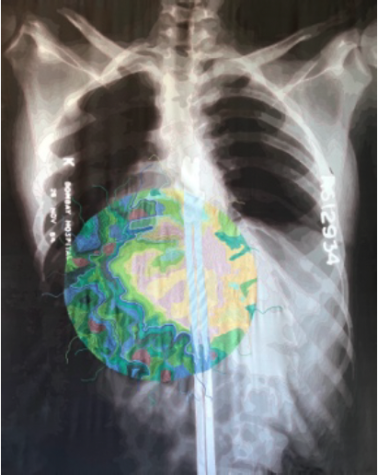
She used the black and white X-ray as her canvas and embroidered a colorful silk landscape of rivers, plants, mountains and valleys in the middle of her chest to create her piece “I Found a River in My Body.”
Through this artwork, Mehta rescripts the perception that disability is unnatural by connecting her lived experience with disability to the nature that is in and around her.
Artist Katherine Sherwood, a retired UC Berkeley professor who specializes in floral painting and conceptual art, has another interpretation of flipping the script.
The gallery features three acrylic paintings from Sherwood’s nine-year series, “Venuses Of The Yelling Clinic,” which was inspired by traditional western male painters who commonly illustrated reclining female nudes that historically defined western beauty standards.
Sherwood’s piece, “After Ingres,” transforms the conventional representation in art history by depicting a disabled nude woman of color holding a peacock feather with her prosthetic forearm and hand. The woman’s head is composed of Sherwood’s own MRI scan that was taken when she endured a cerebral hemorrhage at age 44, and the woman’s tiara is made of an 18th century brain anatomical drawing.
Sherwood’s art provides an intersectional perspective that challenges the view of normality and revises the scripts in art history.
Among the various disability perspectives within the gallery, “Script/Rescript” also delivers a multisensory experience by integrating touch and audio components into the artwork.
Dominic Quagliozzi’s “Blue Cyclops” is made out of a hospital gown whose pattern is very familiar to him. Quagliozzi attached hinges to wooden blocks to allow the artwork to open and close in a zig-zag formation and to invite visitors to interact with the piece.
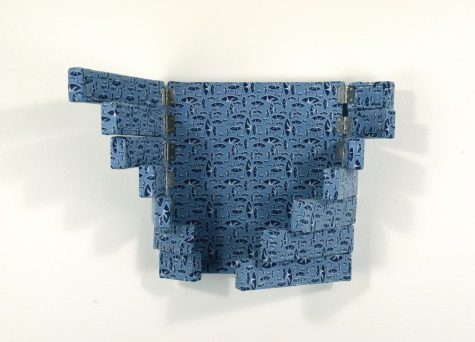
“It’s so often we see art and you’re only able to look at it,” Quagliozzi said. “But my experience as someone with a chronic illness, who’s had a lung transplant and been in the hospital close to 100 times is that in some ways, I am (my body) an object that is looked at and examined but also touched and felt, so I wanted to incorporate that into the art that I make.”
Tactile-friendly works are a big part of Cachia’s activism as a curator. People have different sensory abilities and experience the world in different ways so it is important to include art that doesn’t rely only on vision.
Visitors can also find QR codes alongside each art piece that provide an audio description of the canvas, materials, colors and further visual descriptors to ensure access to those who are blind or have low vision.
“Script/Rescript” has given artists a platform to define what disability means to them while also granting more representation on campus for the disabled community.
Toni Saia, Ph.D., assistant professor for the Department of Administration, Rehabilitation and Postsecondary Education at SDSU, attended the gallery and discussion panel on Nov. 10.
“As a disabled faculty member, I don’t see a lot of representation of my community and my history and so for me, it was very powerful to be in that space with other disabled people,” Saia said. “It was really affirming because there’s a lot of things about academic space that maybe don’t affirm disability identities so it was great to be in a space where it was like ‘wait this is my community, this is my people.’”
Over Cachia’s ten years as a curator, she has witnessed growth within the disabled artist community. Through her curatorial work, she hopes to continue to empower artists to express their personal stories and experiences through art.
“Because of my activism, because I’ve been putting my curatorial work out there for ten years and supporting disabled artists, it’s given the younger generation of disabled artists the confidence to put their work out there and to feel like they can talk about disability without feeling like they’re going to be stigmatized,” Cachia said.
Other artists featured in the gallery are Panteha Abareshi, Jillian Crochet, Sugandha Gupta, Ana García Jácome, Akiko Surai, Sunaura Taylor and Chun-Shan (Sandie) Yi.
“Script/Rescript” is free to the public and will be open until Dec. 8. The exhibition is located at SDSU’s University Art Gallery from noon to 4 p.m. Tuesdays through Thursdays.




